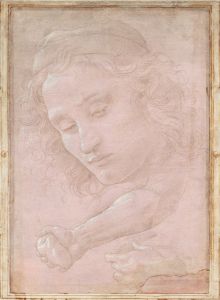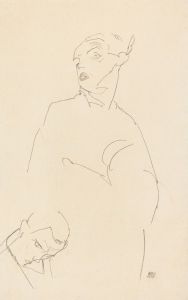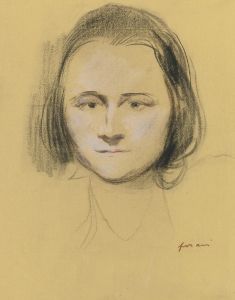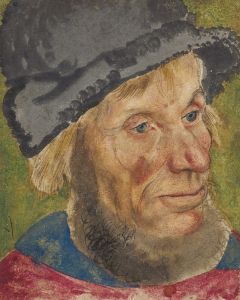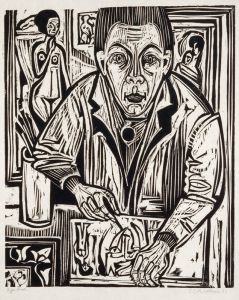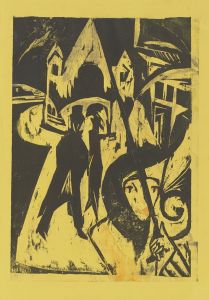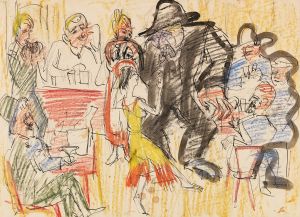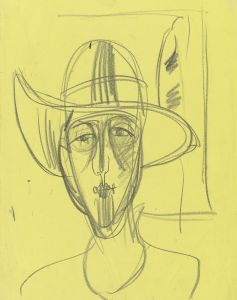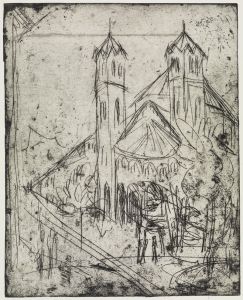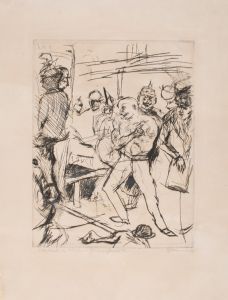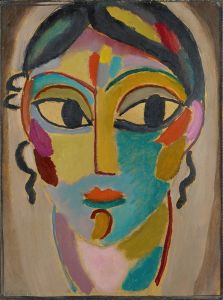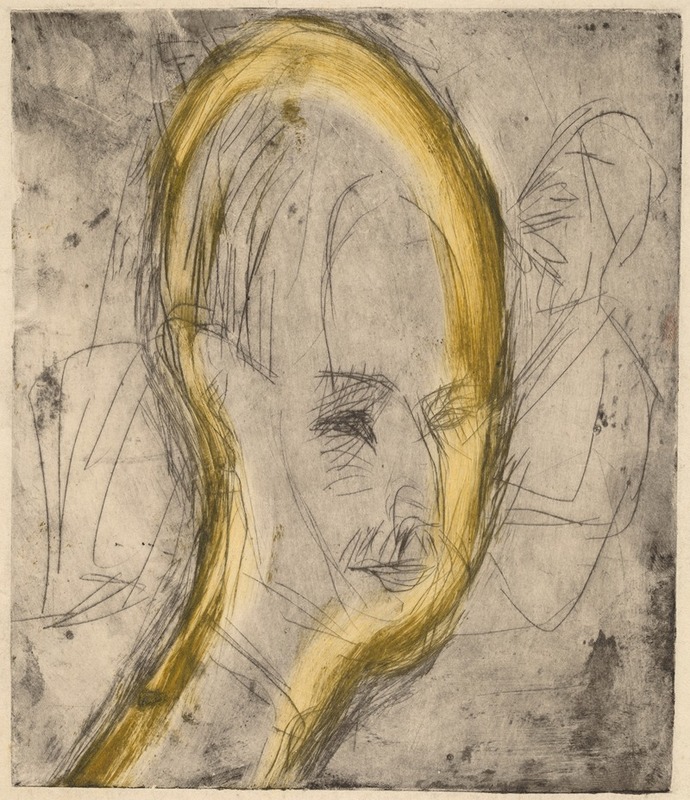
Head of Dr. Bauer
A hand-painted replica of Ernst Ludwig Kirchner’s masterpiece Head of Dr. Bauer, meticulously crafted by professional artists to capture the true essence of the original. Each piece is created with museum-quality canvas and rare mineral pigments, carefully painted by experienced artists with delicate brushstrokes and rich, layered colors to perfectly recreate the texture of the original artwork. Unlike machine-printed reproductions, this hand-painted version brings the painting to life, infused with the artist’s emotions and skill in every stroke. Whether for personal collection or home decoration, it instantly elevates the artistic atmosphere of any space.
"Head of Dr. Bauer" is a painting by the German expressionist artist Ernst Ludwig Kirchner, created in 1914. Kirchner was a founding member of the influential German expressionist group Die Brücke (The Bridge), which sought to create a new form of artistic expression that bridged the past and the future. His work is characterized by bold colors, dynamic compositions, and a focus on the human figure, often exploring themes of modernity and psychological depth.
The painting "Head of Dr. Bauer" is a portrait that exemplifies Kirchner's expressionist style. It features Dr. Bauer, a figure about whom little is known, but who was likely a friend or acquaintance of the artist. The portrait captures the essence of Kirchner's approach to depicting human subjects, emphasizing emotional intensity and psychological complexity over realistic representation.
Kirchner's use of color in "Head of Dr. Bauer" is particularly notable. The palette is vivid and non-naturalistic, with strong contrasts that enhance the emotional impact of the work. This use of color is a hallmark of expressionism, where the artist's subjective experience and emotional response to the subject take precedence over objective reality.
The composition of the painting is dynamic, with bold, sweeping brushstrokes that convey a sense of movement and energy. Kirchner often employed such techniques to express the inner life of his subjects, capturing their psychological states rather than their physical likenesses. In "Head of Dr. Bauer," this approach results in a portrait that feels alive and immediate, drawing the viewer into the emotional world of the subject.
Kirchner's work, including "Head of Dr. Bauer," was influenced by a variety of sources, including African and Oceanic art, which he admired for its perceived authenticity and emotional directness. This influence is evident in the stylized forms and exaggerated features of the portrait, which echo the aesthetic qualities of non-Western art.
The historical context of "Head of Dr. Bauer" is also significant. Painted in 1914, the work was created during a period of great upheaval in Europe, just before the outbreak of World War I. This era of uncertainty and change is reflected in the intensity and urgency of Kirchner's expressionist style. The painting can be seen as a response to the anxieties of the time, capturing the tension and instability of the pre-war period.
Ernst Ludwig Kirchner's career was marked by both critical acclaim and personal struggles. After serving in World War I, he suffered from mental health issues and eventually moved to Switzerland, where he continued to paint until his death in 1938. Despite these challenges, Kirchner's work has had a lasting impact on the development of modern art, and he is regarded as one of the leading figures of German expressionism.
"Head of Dr. Bauer" remains an important example of Kirchner's artistic vision, showcasing his ability to convey complex emotional and psychological states through bold color, dynamic composition, and expressive form. The painting is a testament to Kirchner's innovative approach to portraiture and his enduring influence on the art world.






